Software as a Service (SaaS) has revolutionized the way businesses and consumers interact with technology. However, marketing SaaS products requires a specialized approach due to its unique delivery model. In this comprehensive guide, we’ll dive deep into SaaS marketing, explore key strategies, channels, and best practices to help you scale your SaaS business.
Table of Contents
Whether you’re a startup founder, a marketing professional, or an established SaaS company looking to refine your marketing, this guide provides actionable insights to create an impactful SaaS marketing plan.
What is SaaS Marketing?
SaaS marketing refers to the promotion of software that is hosted online and accessed through the internet, rather than installed on local machines. Unlike traditional software, SaaS products are typically sold as a subscription service. Marketing SaaS products focuses on building awareness, driving trial sign-ups, onboarding users, and increasing subscription renewals.
Because SaaS businesses rely on recurring revenue models, marketing often focuses on customer acquisition and retention as primary goals.
How SaaS Marketing Differs from Regular Product or Service Marketing
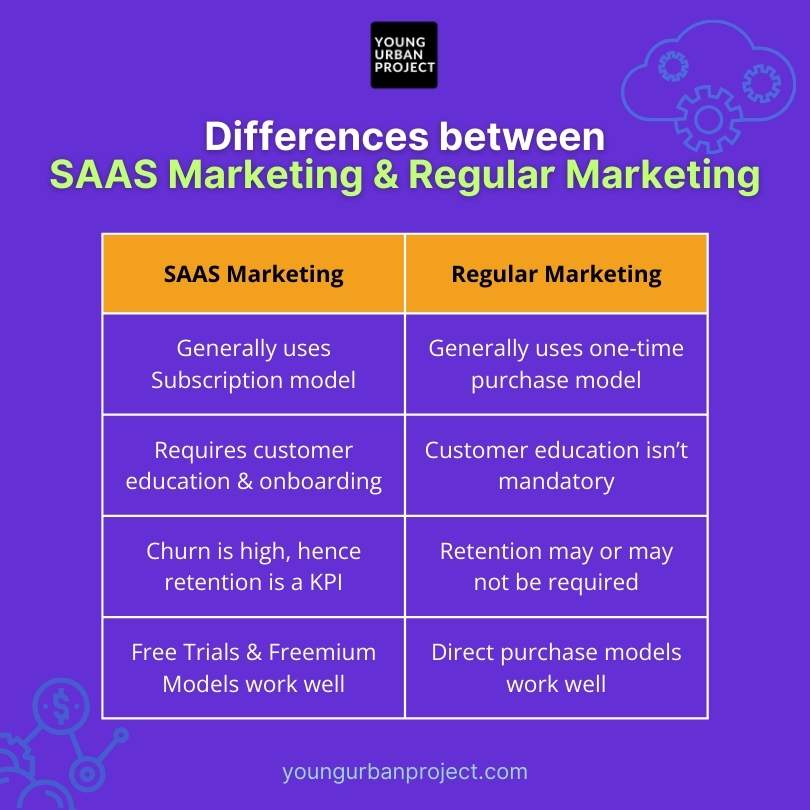
1. Subscription Model vs. One-Time Purchase
One of the key differences is that SaaS products are generally offered on a subscription basis. Traditional product or service marketing aims for a one-time sale, whereas SaaS marketing focuses on acquiring and keeping customers over time. This means that the marketing strategy doesn’t end after the purchase—it extends to customer success and retention. For example, if you use a SAAS tool like Canva, you will need to get a monthly or annual subscription for it.
On the other hand, regular products can have a one-time pricing. For example, if you buy an iPhone, you don’t need to pay a monthly fee for it. You pay one time and the phone is yours to use.
There are, however, some product companies that are experimenting with interesting purchase models. For example, Whoop (fitness tracking company) has a wearable band that tracks health metrics and is available at a one-time cost. However, to use the features of this band, you also need to subscribe to their annual plans. Oura (wearable ring manufacturer) is another company that does this.
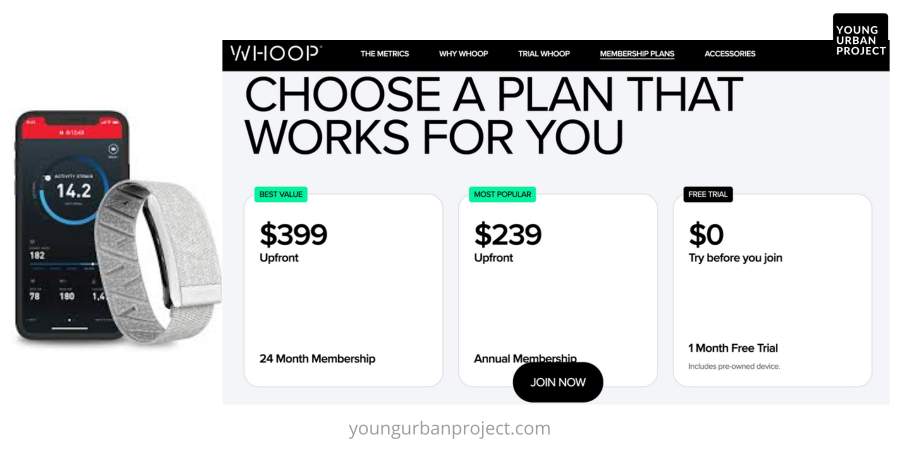
2. Customer Education and Onboarding
SaaS products often come with a learning curve. Therefore, educating customers through resources like tutorials, webinars, and user guides is essential. Marketing plays a pivotal role in creating content that helps users onboard smoothly.
3. Focus on Customer Retention
In SaaS, customer churn (when customers cancel their subscriptions) is a major concern. SaaS marketing strategies focus heavily on retaining customers, often through nurturing campaigns, product updates, and continuous engagement.
4. Free Trials and Freemium Models
Many SaaS businesses use free trials or freemium models to attract new users. The goal of SaaS marketing is not just to drive sign-ups but to turn free users into paying customers.
Also Read: Difference between Product Marketing and Service Marketing
Elements of a SaaS Marketing Strategy
To create an effective SaaS marketing strategy, you need to focus on the following key elements:
1. Target Audience and Buyer Personas
Clearly defining your target audience is critical. Who are your ideal customers? Are they small business owners, enterprise-level IT managers, or marketing professionals? Understanding the buyer personas and their pain points helps you tailor your messaging.
2. Value Proposition
Your SaaS product needs to have a clearly defined value proposition. Why should customers choose your product over others? What unique problem does it solve? The value proposition should be the foundation of your marketing efforts.
3. Customer Journey Mapping
Understanding the stages of the customer journey—from awareness to conversion and beyond—enables you to create targeted marketing messages that address the needs of potential customers at each stage.
4. Content Marketing
Content marketing is a key strategy for educating potential customers about your product. It includes blog posts, whitepapers, case studies, videos, and webinars that help explain your product and its benefits.
5. Customer Success & Retention Campaigns
Given the subscription model of SaaS, ongoing customer success and retention efforts are critical. Marketing teams should collaborate with customer success teams to develop email campaigns and loyalty programs that keep users engaged and reduce churn.
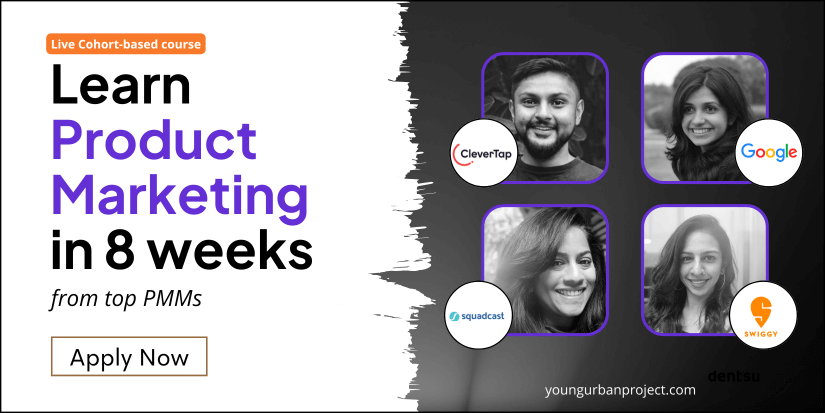
Top Channels for SaaS Marketing
SaaS marketing relies on a variety of online channels to reach target audiences. Each channel brings in it’s own strengths and distribution. But some channels might also have their limitation in terms of relevance, reliability, and practicality.
Here are the most effective SAAS marketing channels that any product marketer would swear by:
1. Search Engine Optimization (SEO)
SEO (also known as organic or unpaid marketing) is essential for driving organic traffic. SaaS companies should focus on optimizing their websites for relevant keywords, writing blog content that answers customer queries, and ensuring their site architecture is SEO-friendly.
2. Paid Advertising
Platforms like Google Ads, Meta Ads and LinkedIn Ads are great for targeting specific industries and job titles. Paid advertising campaigns can drive traffic to product landing pages and are especially useful for promoting free trials and demos.
Once a well performing funnel is identified, the pipeline can be automated, and the conversion rates can be optimised.
3. Email Marketing
Email marketing remains one of the highest ROI channels. Regular newsletters, onboarding sequences, and product update emails help nurture leads and retain customers.
4. Content Marketing
Educational content such as blog posts, eBooks, webinars, and how-to guides attract and convert leads by providing value upfront. This content should align with the needs of different customer personas and stages of the buyer’s journey.
5. Social Media Marketing
For SaaS companies, platforms like LinkedIn and Twitter are crucial for B2B marketing. Sharing thought leadership content, industry news, and product updates helps build brand authority.
Also Read: Positioning vs Messaging: Key Differences Explained
15 Saas Marketing Strategies
1. Content Marketing with a Customer-Centric Approach
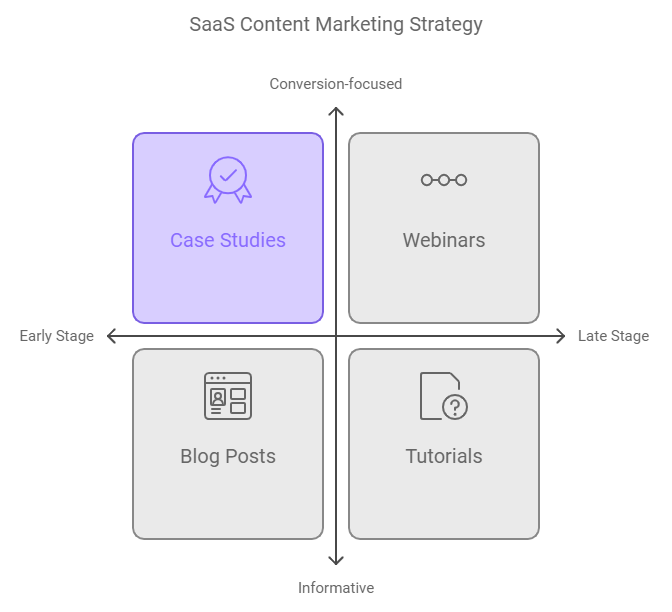
Content marketing is the foundation of any successful SaaS marketing strategy. But instead of simply focusing on features or creating keyword-stuffed blogs, prioritize outcome-driven content. Speak directly to your customers’ pain points and show how your SaaS solution can simplify their lives or solve their problems.
Start by mapping your content to different stages of the buyer’s journey. From informative blog posts that answer early-stage questions to in-depth case studies that convert leads into customers, make sure your content helps your audience move toward their goals.
Pro Tip: Invest in high-value, evergreen content like tutorials, industry reports, or webinars that continue to attract traffic long after publication. Ensure you distribute it through channels your audience frequents—whether that’s LinkedIn, niche communities, or through email marketing.
2. Maximize SEO
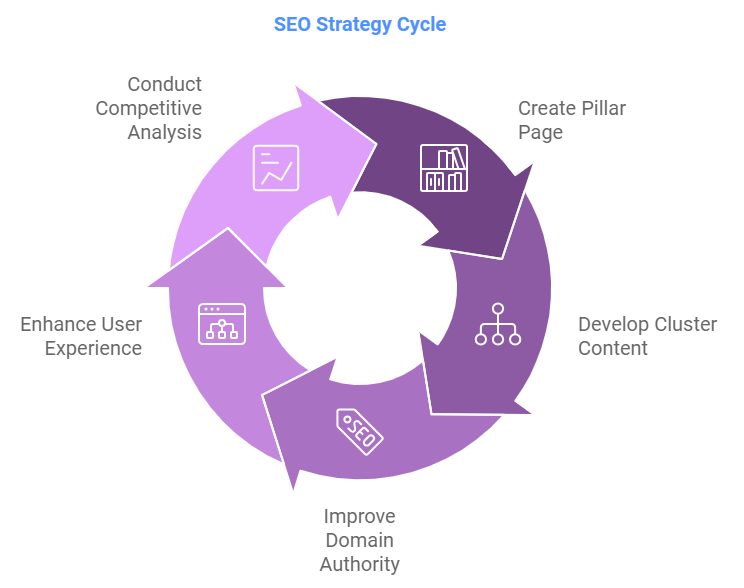
To get your SaaS product ranking higher in search engines, you need more than just good keywords. Structure your SEO strategy around topic clusters. This means creating a comprehensive piece of content (a “pillar page”) about a broad topic that links to more in-depth blog posts or guides (the “cluster content”).
This helps improve your domain authority, provides better internal linking, and gives users a seamless experience when navigating your website. It’s a strategic way to cover a topic from multiple angles, showing search engines that you’re a true expert.
Pro Tip: Perform competitive analysis on high-ranking SaaS companies in your niche and find content gaps you can fill. Not only will this help with SEO, but it will also position you as a thought leader.
3. Offer Free Trials, but Focus on the Experience
Offering a free trial is a proven tactic for SaaS companies, but it’s not just about handing out access to your product. It’s about crafting a seamless experience that shows off your platform’s value. Many SaaS businesses focus too much on features and overlook how users experience those features during the trial.
Start with a frictionless onboarding process—guide users step by step with personalized tutorials, tooltips, or even live chat support. Track their activity and offer relevant suggestions to make sure they see the key benefits quickly.
Pro Tip: Instead of bombarding users with sales emails, use behavioral triggers. For example, if a user hasn’t logged in for a few days, send a “We miss you” email with tips to get more out of the trial.
4. Launch Targeted PPC Campaigns with Retargeting
PPC can help SaaS companies appear in front of potential customers who are actively searching for solutions. But to get the most out of your PPC spend, focus on high-intent keywords and retargeting.
High-intent keywords capture users closer to making a purchase decision, while retargeting helps you stay top-of-mind for people who have already visited your site but haven’t converted.
Pair this with custom landing pages that align directly with the ad’s promise. The message on the landing page should echo the ad’s CTA to avoid any confusion.
Pro Tip: Continuously optimize your ads based on A/B testing. Try testing different CTAs, headlines, and imagery to see what resonates most with your audience.
5. Leverage Social Proof and Case Studies
When potential customers are considering your SaaS product, they want to see how it has helped others. Social proof—whether it’s customer reviews, testimonials, or case studies—is a powerful tool in SaaS marketing.
Build detailed case studies showcasing how your product helped clients overcome challenges. Use specific data and results to highlight the value of your SaaS product in action. Share these across your website, email campaigns, and even social media to instill trust and credibility.
Pro Tip: Use video testimonials to create a more personal touch. Hearing directly from happy customers can be incredibly persuasive in converting leads into paying customers.
By focusing on these personalized, customer-centric strategies, your SaaS marketing efforts will not only attract leads but also convert them into loyal customers.
6. Leverage Customer Testimonials
Your existing users are the real stars of your SaaS business. By showcasing their experiences, you can boost credibility and trust with new prospects. Collect short video testimonials or case studies that highlight how your product transformed their workflow or solved a major problem. Real stories resonate far more than stats, so make it personal!
Pro Tip: Use these testimonials across social media, your website, and in email campaigns to keep the trust-building consistent across channels.
7. Optimize for Mobile Experience
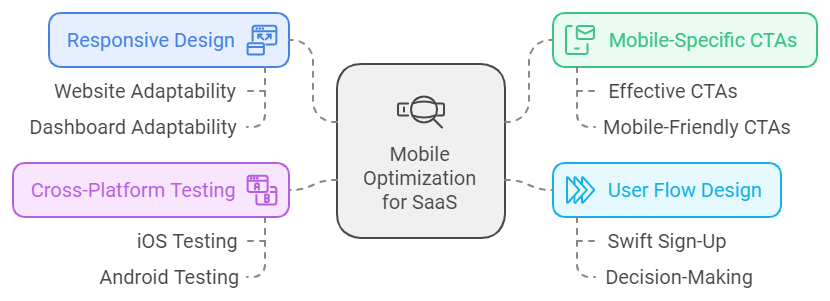
The way users interact with SaaS products is increasingly mobile-first, so your website, dashboard, and overall experience need to reflect that shift. Ensure that your product looks and functions seamlessly on mobile devices to capture leads on the go. Create mobile-specific CTAs and design user flows that allow users to sign up or make decisions swiftly without having to switch devices.
Pro Tip: Run tests on different mobile platforms (iOS, Android, etc.) to ensure your SaaS product works smoothly across the board.
8. Gamify Onboarding
Onboarding is your opportunity to wow your users, and gamification makes it fun! By adding gamified elements like badges, progress bars, and rewards for achieving key milestones, you keep users engaged and eager to continue exploring your platform. A little incentive can go a long way!
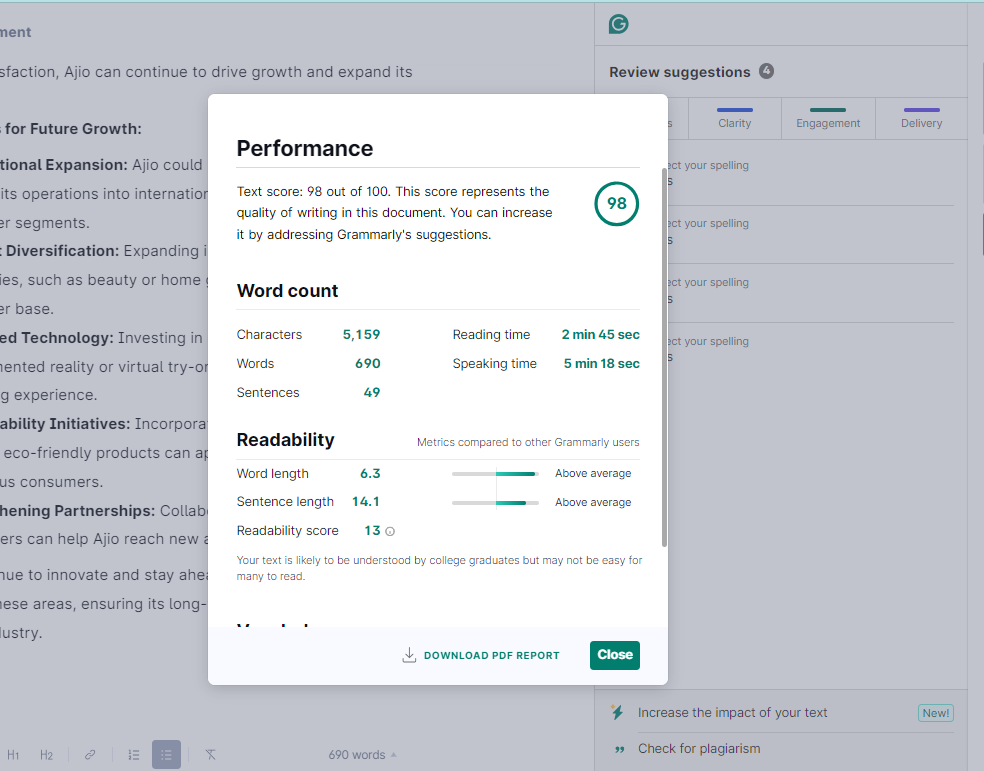
For example, Grammarly analyzes and scores your writing.
Pro Tip: Create “achievement” challenges for your users during their first week, offering small rewards for completing certain actions (e.g., setting up a profile, inviting a colleague, etc.).
9. Targeted LinkedIn Ads for B2B
If you’re in the B2B space, LinkedIn is a goldmine for connecting with decision-makers. Leverage LinkedIn’s ad targeting features to laser-focus on specific industries, job roles, and company sizes. The key to LinkedIn ads is personalization, so craft messages that speak directly to the pain points and needs of your target audience.
Pro Tip: Use LinkedIn’s Lead Gen Forms to collect info without users leaving the platform, ensuring a frictionless process for capturing leads.
10. Offer Product-Led Webinars
Instead of traditional sales pitches, let your product do the talking through live demos and hands-on webinars. These sessions give potential users a taste of how your SaaS works in real-time, allowing them to ask questions and see the platform in action. Focus on practical use cases and emphasize the benefits, rather than features.
Pro Tip: Record these webinars and repurpose the content into snippets for social media or blog posts to get ongoing mileage out of one event.
11. Build a Freemium Model
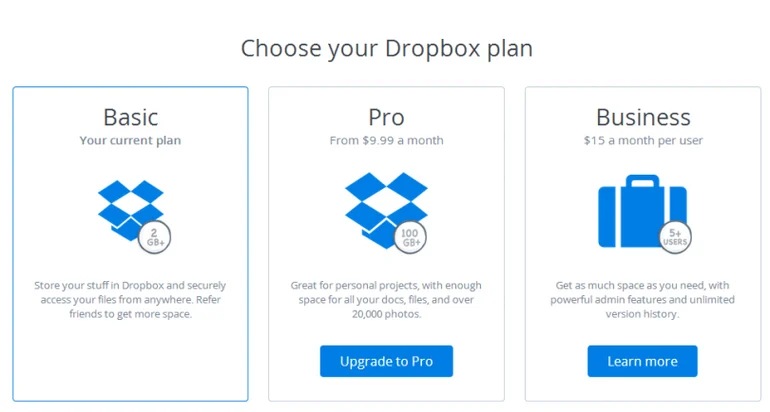
Not ready to commit? No problem! Give potential customers a no-strings-attached version of your SaaS with a freemium model. Offer a basic tier of your service that’s completely free, and when users hit their limits, guide them naturally toward premium features that require upgrading.
Pro Tip: Ensure the free plan still offers enough value to hook users in, but leaves them wanting just enough to upgrade for advanced functionalities.
12. Create Engaging Email Drip Campaigns
Rather than bombarding potential customers with a single long email, create an engaging drip campaign that nurtures them over time. Start with helpful content, then gradually introduce how your SaaS solves their problems, keeping it relevant and timely.
Pro Tip: Personalize these drip emails based on user behavior—did they visit your pricing page but not sign up? Customize an email that nudges them in the right direction with a special offer.
13. Offer Exclusive Communities
People love to belong, especially when it’s exclusive. Create an online community (think Slack, Discord, or private Facebook groups) where your users can exchange ideas, get product tips, and troubleshoot. This community can become an invaluable resource for both your users and your company, as it offers direct feedback on what’s working and what’s not.
Pro Tip: Engage regularly with the community, offer exclusive insights, and reward your most active members to keep the momentum going.
14. Content Marketing with a Twist
Content is king, but don’t just blog for the sake of it. Focus on interactive content like quizzes, ROI calculators, or tool comparisons. These formats encourage engagement and give users an immediate, tangible benefit from interacting with your SaaS brand.
Pro Tip: Create a dynamic quiz that helps potential customers figure out which of your SaaS plans suits them best, driving them toward making a decision.
15. Personalize the User Experience
Users want to feel understood, so tailor their experience based on their behavior and preferences. Whether through personalized dashboard experiences, in-app messages, or custom recommendations based on usage, show your users that your SaaS is adaptable to their unique needs.
Pro Tip: Use AI-powered tools to analyze user behavior and send automated suggestions on how to get the most out of the product based on what they’ve already done.
SaaS Marketing Metrics & Terminologies
Measuring the success of your SaaS marketing efforts requires a deep understanding of key metrics and terminology:
1. Customer Acquisition Cost (CAC)

CAC measures how much it costs to acquire a new customer, factoring in all marketing and sales expenses. Lowering CAC while maintaining or increasing growth is the ultimate goal.
2. Customer Lifetime Value (CLV or LTV or CLTV)

CLV is the total revenue generated from a customer over their entire relationship with your company. A healthy SaaS business will have a CLV that far exceeds its CAC.
3. Churn Rate

The churn rate is the percentage of customers who cancel their subscription over a given period. Keeping churn low is vital for SaaS businesses to maintain consistent revenue growth.
4. Monthly Recurring Revenue (MRR)
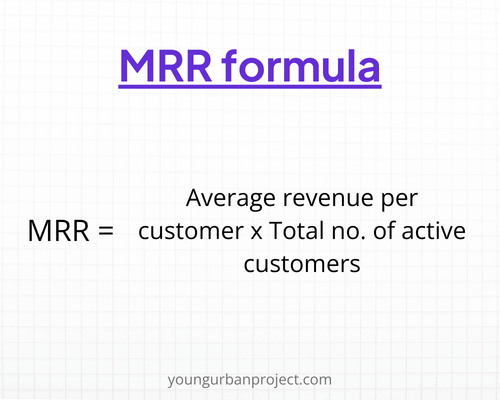
MRR is an important metric that tracks the predictable revenue a SaaS company can expect each month. Tracking MRR helps businesses assess growth trends.
5. Net Promoter Score (NPS)

NPS measures customer satisfaction and loyalty by asking users how likely they are to recommend your product to others. It’s a strong indicator of customer retention potential.
How to Build a SaaS Marketing Plan
1. Set Clear Objectives
The first step in building a SaaS marketing plan is to set clear objectives. Are you focused on customer acquisition, improving retention, or launching a new feature? Your goals will dictate your strategy.
2. Define Your Budget and Resources
Understanding your available resources is essential for executing a realistic marketing plan. Determine what percentage of your budget should go to paid advertising, content marketing, and customer success initiatives.
3. Leverage Customer Insights
Use customer insights gathered through surveys, analytics, and user feedback to refine your marketing efforts. Understanding customer needs and preferences helps you craft messages that resonate.
4. Create a Content Calendar
Consistent content production is key to SaaS marketing. Plan and schedule blog posts, email campaigns, and social media updates in advance.
SaaS Marketing Plan Best Practices
1. Focus on User Experience
SaaS customers expect a seamless experience. Ensure that your website, trial process, and customer support are easy to use and frictionless.
2. Prioritize Retention
It’s far more cost-effective to retain existing customers than to acquire new ones. Implementing loyalty programs, offering upsells, and maintaining ongoing communication can significantly reduce churn.
3. Invest in Automation
Marketing automation tools allow you to scale personalized email campaigns, lead nurturing efforts, and customer engagement activities, freeing up time for strategic planning.
4. Make Data-Driven Decisions
Data should be at the core of all SaaS marketing efforts. Regularly analyze your marketing metrics to identify areas for improvement and optimization.
Challenges in SaaS Marketing
The unique nature of SaaS products leads to specific marketing challenges that can hinder growth if not properly addressed. Below are the key challenges marketers in this field face and how they can be overcome.
1. Standing Out in a Crowded Market
One of the biggest challenges in SaaS marketing is differentiation. The SaaS industry is flooded with similar products that promise to solve similar problems, making it difficult for businesses to stand out. Customers are often inundated with options, leading to decision fatigue.
Solution: Focus on your unique selling proposition (USP). Emphasize what sets your software apart, whether it’s a feature, pricing model, customer support, or integration capability. Highlighting case studies and real-world examples of how your SaaS product has solved specific problems for customers can make your product more relatable and attractive.
2. Building Trust with a New Audience
SaaS products are often intangible and require users to commit to recurring payments. This can make prospective customers hesitant, especially if they are unfamiliar with the brand. Trust becomes a critical factor in convincing customers to sign up for a demo or trial.
Solution: Leveraging testimonials, reviews, and case studies can significantly boost credibility. Offering free trials or freemium models allows potential customers to experience the product without the commitment, which builds trust. In addition, developing educational content, such as blogs, webinars, or whitepapers, establishes authority and helps users understand the value of your product.
3. Customer Retention vs. Acquisition
Acquiring new customers can be expensive, but retaining them is even more crucial for SaaS companies, given their subscription-based revenue model. High churn rates can quickly impact profitability, making customer retention a significant challenge.
Solution: A well-rounded onboarding process is key to ensuring customers see value in the product from the start. Regular check-ins, customer support, and educational content can help users fully adopt the software. Moreover, using customer feedback loops to understand pain points and continually improve the product is essential for keeping customers engaged long-term.
4. Effective Content Marketing
SaaS products typically have complex features, and communicating these features in a clear, engaging way can be a challenge. Users may struggle to understand how the software will benefit them or solve their problems if the content is overly technical or generic.
Solution: Create tailored content that speaks to different segments of your target audience. Use various content formats—such as blog posts, tutorials, and explainer videos—to address different stages of the buyer’s journey. Simplifying technical jargon and focusing on the product’s benefits rather than its features will help potential customers grasp the product’s value.
5. Dealing with Long Sales Cycles
SaaS products, especially in B2B, often have long sales cycles. Potential customers may take weeks or months to make a purchasing decision, given the need for approvals, demos, and trials. Maintaining momentum during this time is crucial.
Solution: Use marketing automation tools to nurture leads throughout the sales cycle. Drip email campaigns, personalized content, and regular updates on product features or case studies can keep potential customers engaged. Aligning sales and marketing teams is also important to ensure a seamless transition from lead generation to closing the deal.
6. Demonstrating Value Continuously
SaaS marketing doesn’t stop once the customer makes a purchase. Since SaaS products rely on recurring revenue, it’s critical to continuously demonstrate value to retain customers and minimize churn.
Solution: Regularly communicate product updates, new features, and best practices through newsletters, webinars, or in-app notifications. Offering proactive customer support and personalized touchpoints ensures customers feel valued and supported throughout their journey.
SaaS marketing examples
1. MailChimp’s Clever Campaign: Turning Mistakes into Marketing Gold
MailChimp pulled off one of the most creative marketing campaigns ever by embracing something that most brands would shy away from—people constantly mispronouncing their name! The company noticed how users often made funny mistakes when saying or typing “MailChimp,” and instead of correcting them, they leaned into it. They launched a series of quirky videos and posters that played with these mispronunciations. Imagine names like “MailShrimp,” “JailBlimp,” and “KaleLimp.” Pretty odd, right? What made it even more interesting was that none of the ads featured their actual brand name!
The genius of this campaign was that it sparked curiosity. People saw these bizarre names and were intrigued enough to search for the ads online. The result? Over 67 million organic searches and $3.52 million in earned media value! It wasn’t just a hit with the public; it also won the prestigious Grand Prix at the Cannes Lions in 2017. Even today, this campaign is often hailed as one of the most memorable and successful SaaS marketing strategies out there.
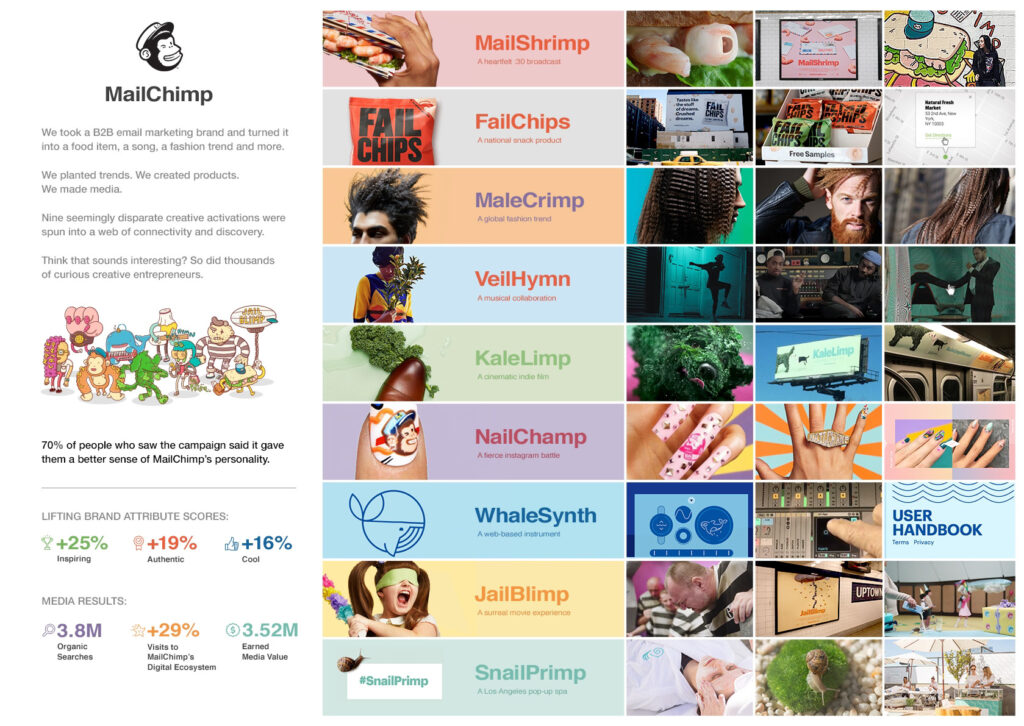
2. MailModo: Letting the Product Sell Itself
MailModo took a different approach with its email marketing strategy by turning its product into the campaign itself. They allow users to add interactive elements to emails, so naturally, they decided to showcase this feature in their own lead-generation emails. Think of it as a mini product demo in every email they send out. Potential customers get a firsthand look at how the product works without having to schedule a demo or click through a landing page—brilliant, right?
This hands-on experience moves people closer to purchasing because they’re not just reading about the features; they’re interacting with them in real-time. MailModo also amplified their efforts on social media. A tweet by their marketing manager Mansi, for example, showcased a before-and-after comparison of a brand’s email, showing how MailModo’s interactive features could enhance engagement. It’s a smart move that turns the act of marketing into an actual use case for the product itself, making the value crystal clear.
3. Trello: The Word-of-Mouth Powerhouse
Trello’s marketing strategy (or lack thereof) is as unique as it gets. They didn’t spend money on traditional advertising. Instead, they poured their resources into building a tool that people would naturally love to talk about. And guess what? It worked. Trello is now a go-to for organizing projects into easy-to-monitor boards, and it’s all thanks to the magic of word-of-mouth marketing.
Trello’s user-friendly interface and free baseline service created a buzz that rippled across blogs, forums, and social media. Companies and individuals rave about how it has streamlined their workflows. With so many people talking about it, others naturally get curious and consider giving it a try. This approach keeps Trello’s customer acquisition cost (CAC) low while their customer lifetime value (LTV) remains high.
Even better, Trello has cleverly incentivized users to spread the word. By offering free upgrades in exchange for sharing on social media or referring new users, they turn their customers into brand ambassadors without spending a fortune. It’s a win-win: Trello keeps growing, and users benefit from a constantly improving product.
Future trends in SaaS marketing
The world of SaaS marketing is constantly evolving, and what worked a few years ago might not cut it in the future. With competition heating up and customer expectations rising, SaaS companies need to stay ahead of the curve if they want to succeed. So, what’s on the horizon for SaaS marketing? Here’s a look at the key trends shaping the future.
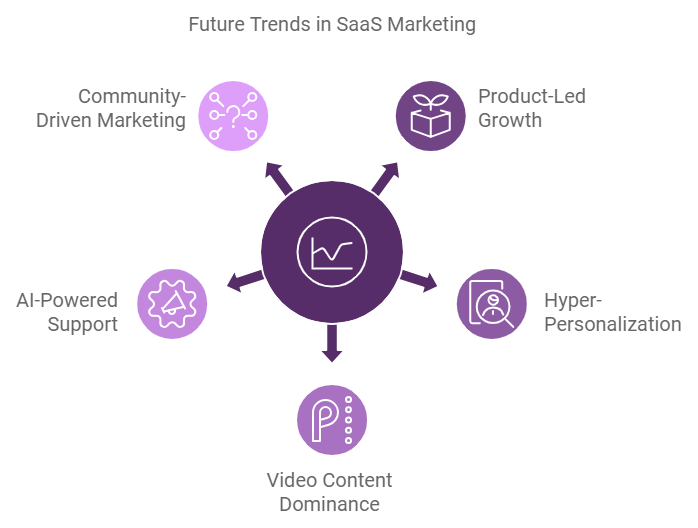
1. Product-Led Growth (PLG) Will Keep Gaining Momentum
Product-led growth (PLG) has been around for a while, but it’s going to play an even bigger role in the future of SaaS marketing. The idea is simple: Let your product be the star of the show. Instead of relying solely on sales and marketing to drive growth, the product itself becomes the main vehicle for attracting and retaining users. Think of companies like Slack or Zoom—users sign up, love the product, and it spreads through teams and organizations naturally.
As more SaaS companies adopt this approach, expect to see an even stronger focus on seamless onboarding experiences, in-app guidance, and features that are built to encourage viral growth. The future is all about letting the product do the talking.
2. Hyper-Personalization Will Be the Norm
Personalization is nothing new, but in the future, it’s going to get a serious upgrade. Customers today don’t just want personalized content; they expect it. And with AI and machine learning advancing, SaaS companies will be able to offer hyper-personalized experiences at scale. We’re talking about more than just using someone’s name in an email. Future marketing strategies will use data to offer tailored recommendations, customized content, and even pricing plans based on a user’s specific needs and behavior.
The companies that nail this will not only attract more customers but also keep them loyal. Hyper-personalization is no longer a nice-to-have—it’s going to be a must-have.
3. Video Content Will Dominate Marketing Strategies
In the future, video content is set to become the king of SaaS marketing. With attention spans getting shorter and competition fiercer, video offers a way to communicate complex ideas quickly and engagingly. Whether it’s explainer videos, customer testimonials, or product demos, video allows SaaS brands to showcase their value in a more dynamic way.
Live webinars and video tutorials are already huge, but expect to see more interactive videos where users can engage with the content in real-time. With video tools becoming more accessible, producing high-quality video content will be an essential part of any SaaS marketing plan.
4. AI-Powered Chatbots and Customer Support
AI-powered chatbots are already transforming customer support in the SaaS space, but they’re set to become even more sophisticated in the future. Instead of just handling basic queries, AI bots will soon be able to offer personalized product recommendations, guide users through complex setups, and even predict issues before they arise.
By leveraging AI, SaaS companies will be able to offer 24/7 support without burning through resources. This isn’t just about efficiency—it’s about improving the customer experience in a way that feels personal and proactive.
5. Community-Driven Marketing Will Grow
Community-driven marketing has been on the rise, and it will only get bigger. As more SaaS companies look for ways to build deeper connections with their users, online communities will play a huge role. Whether it’s through forums, social media groups, or exclusive Slack channels, fostering a strong user community allows SaaS companies to engage customers beyond the product.
These communities can provide valuable feedback, create brand advocates, and even serve as a source of organic user-generated content. In the future, expect to see more companies focusing on building thriving communities to drive growth and loyalty.
Also Read: Product Marketing vs Conventional Marketing – Main differences
FAQs About SaaS Marketing
What is the most important SaaS marketing metric?
While many metrics are important, Customer Acquisition Cost (CAC) and Customer Lifetime Value (CLV) are often considered the most crucial as they determine profitability.
How can I reduce customer churn in SaaS marketing?
Reducing churn involves improving the onboarding process, maintaining consistent customer communication, and focusing on product updates and customer success.
What role does content marketing play in SaaS?
Content marketing is crucial for SaaS businesses. It helps educate potential customers, guides them through the buyer’s journey, and provides value that builds trust.
SaaS marketing presents unique challenges, but with a clear strategy, a focus on customer retention, and the right channels, you can drive significant growth for your SaaS business. By understanding the nuances of SaaS marketing and continuously optimizing based on data and feedback, you’ll be well-positioned to stand out in a competitive market.

